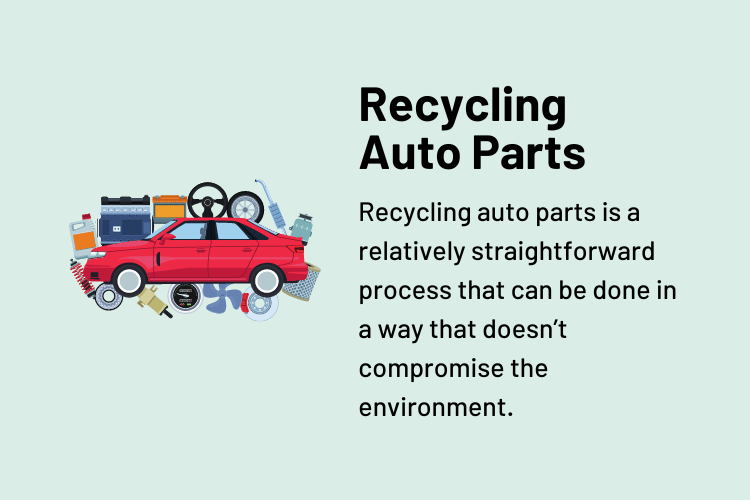
An Overview On Recycling Used Auto Parts
Whether you like to get your hands dirty repairing your vehicles or you leave that up to the auto repair shop, you’ll likely have to deal with how to recycle auto parts if you own a vehicle. Everything from hoses to transmissions to windshields to car seat covers adds to the waste created by your car. Even though car parts are not the easiest thing to recycle, we’ve got a few resources to make the job easier.
Recycling windshields and wiper blades
Since windshields are made with laminated glass and flexible plastic, they’re one of the most difficult things about your vehicle to recycle. That said, it is possible to efficiently recycle windshields and give them a new life by using the recycled materials to create interesting new products. Here are some examples:
- EnviroGLAS’s recycled terrazzo flooring
- Ellen Blakeley’s tempered glass mosaics
- Ruth Korthof’s kitchenware and art made of recycled materials
Further, you can also find numerous DIY projects involving recycled windshield glass from platforms such as DeviantArt and Pinterest.
In general, recycling windshield glass involves breaking up the glass into chunks and separating it from the plastic. The materials are then used in separate recycling procedures to create new products.
If you want to recycle your windshield, there are several options available to you – you can contact your local recycling center, solid waste management authority, or a windshield repair shop.
As for windshield wiper blades, you can try to recycle the various components by pulling apart the metal and plastics and disposing of the materials separately. Alternative, reuse them as squeegees in your shower or for washing windows!
Recycling vehicle seat covers and car floor mats
Another auto recycling issue altogether is seat covers, since they contain a variety of materials, including but not limited to synthetic fibers, cotton, neoprene, and polyurethane. Many of these components can be recycled into new products, but the process is often quite complex. For example, recycling polyurethane is not straightforward. Here, the material is usually “downcycled” into other materials using mechanical methods or chemical recycling.
In order to recycle your car floor mats and vehicle seat covers, contact your local recycling programs. Depending on the program, they may be able to accept or trade the material or direct you to a facility that can.
Recycling car parts
Those other miscellaneous engine auto parts can also be a mystery when it comes to recycling. They contain metals, plastic, fluids, and other materials. Thankfully, recycling these can be a bit easier than other options:
- Recycling centers: Check with your local facilities to see if they take scrap metal, and if so, they’ll likely recycle car parts, too. Some may even have the capability to recycle belts and rubber hoses, radiators, used oil filters, and transmissions.
- Auto repair shops: Ask at your local repair shop wither they have ways to recycle auto parts. Some will charge a fee, while others will recycle them by refurbishing and reselling them.
Selling used auto parts
There are numerous companies that will buy your used auto parts from you. To find one in your area, simply do a search for something like “selling used auto parts” or “trade car parts” + your city/town name and you’ll be sure to find something close by. Often these organizations will repair and refurbish used auto parts to make them usable again in another vehicle, which is even better than recycling.
